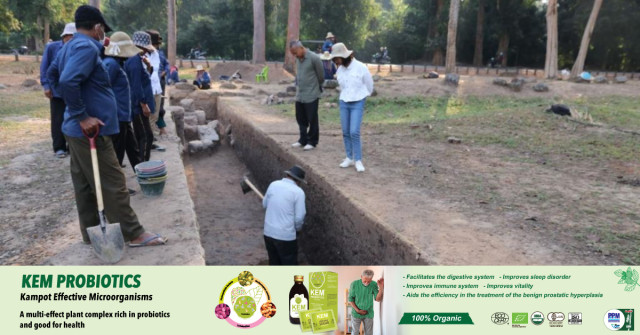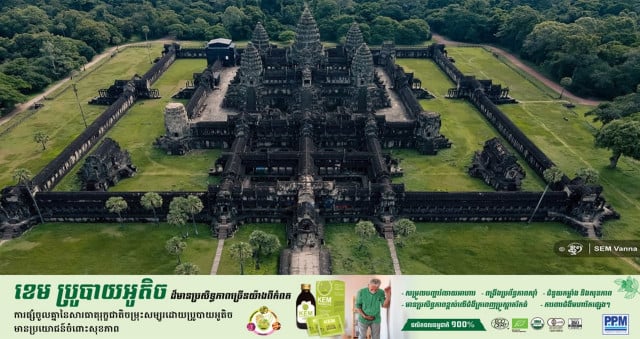Cambodian Archaeologists Plan to Restore Ancient Pond at Bayon Temple in Famed Angkor Park

- By Xinhua News Agency
- January 24, 2024 9:50 AM
PHNOM PENH -- Archeologists from the APSARA National Authority (ANA) have planned to restore an ancient pond at the centuries-old Bayon Temple in northwest Cambodia's famed Angkor Archaeological Park, said an ANA's news release on Tuesday.
The experts are currently conducting an excavation in the southeastern part of the Bayon Temple, formerly believed to be the structure of an ancient pond, to study the sediments and size of the pond in order to restore this reservoir, the news release said.
Khieu Chan, an archaeologist at the ancient pond excavation project, said the excavation is being carried out by the working team of the Department of Water, Forestry and Infrastructure Management to find out the pond's exact size and structure.
He added that the excavation was to determine whether water brought soil to fill into this pond, or the pond was filled in with soil after Angkor was abandoned as a capital city.
"The excavation aims to study the connection between the ancient pond and the ancient wall in order to determine the pond's exact size and structure," Khieu Chan said.
"When our experts have studied the size of the pond, the shoreline, and the depth of the ancient pond according to history, the team will restore this ancient pond to store water again as it was in the ancient times," he added.
Meanwhile, another ANA archaeological team is restoring the first terrace platform of the Bayon Temple in the southeast corner that has collapsed and is unstable, the news release said.
Lim Hak, a technical staff member of the Department of Conservation of Monuments and Preventive Archaeology, said the renovation of the 10-meter-long sandstone platform started in November 2023 and will take several more months to be completed.
Built during the reign of Jayavarman VII in the late 12th century and early 13th century, Bayon is one of the key temples in the 401-square-km Angkor Archaeological Park in northwest Siem Reap province.
The Angkor Archaeological Park, which was inscribed on the World Heritage List of the United Nations Educational, Scientific and Cultural Organization (UNESCO) in 1992, is the most popular tourist destination in the Southeast Asian nation.
The ancient park attracted almost 800,000 international visitors in 2023, up 177 percent from only 287,454 in a year earlier, the state-owned Angkor Enterprise said, adding that the park earned a gross revenue of 37.1 million U.S. dollars from ticket sales in 2023, up 222 percent from merely 11.5 million dollars in the year before.















